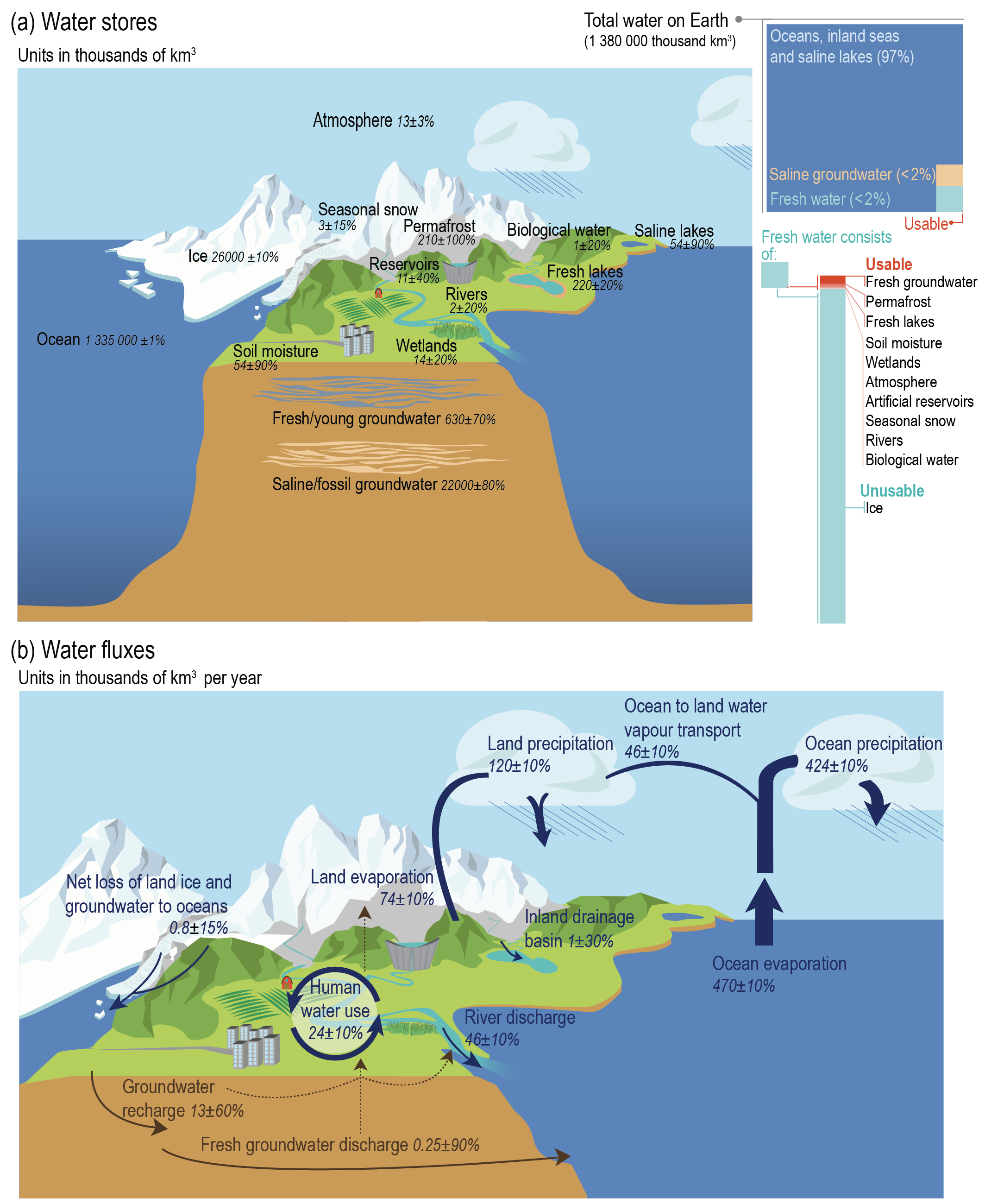Back chapter figures
Figure 8.1
Figure caption
Figure 8.1 | Depiction of the present-day water cycle based on previous assessments (Trenberth et al., 2011; Rodell et al., 2015; Abbott et al., 2019) with adjustments for groundwater flows (Zhou et al., 2019c; Luijendijk et al., 2020), seasonal snow (Pulliainen et al., 2020) and ocean precipitation and evaporation (Stephens et al., 2012; Allan et al., 2020; Gutenstein et al., 2021). The net loss of frozen and liquid water from land to ocean is estimated from Chapter 9, Table 9.5. In the atmosphere, which accounts for only 0.001% of all water on Earth, water primarily occurs as a gas (water vapour), but it is also present as ice and liquid water within clouds. The ocean is the primary water reservoir on Earth: it comprises mostly liquid water across much of the globe but also includes areas covered by ice in polar regions. Liquid freshwater on land forms surface water (lakes, rivers) and, together with soil moisture and mostly unusable groundwater stores, accounts for less than 2% of global water (Stocker et al., 2013). Solid terrestrial water that occurs as ice sheets, glaciers, snow and ice on the surface, and permafrost currently represents nearly 2% of the planet’s water (Stocker et al., 2013). Water that falls as snow in winter provides soil moisture and streamflow after melting, which are essential for human activities and ecosystem functioning. Note that these best estimates do not lead to a perfectly closed global water budget and that this budget has no reason to be closed given the ongoing human influence through both climate change (e.g., melting of ice sheets and glaciers, see Chapter 9) and water use (e.g., groundwater depletion through pumping into fossil aquifers, see Figure 8.10).
